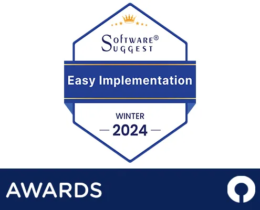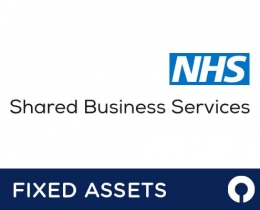Calculate ROI for Asset Tracking Software
Work out the possible cost-efficiency and time savings of Asset Tracking software for your company
Work out the possible cost-efficiency and time savings of Asset Tracking software for your company
As companies expand their operations and increase their asset base, they need to keep track of their assets, including equipment, tools, and vehicles. Asset tracking software is an effective solution for this purpose, helping organisations monitor the movement and usage of their assets in real-time. But how can you determine the return on investment (ROI) of asset tracking software?
In this article, we’ll learn about the key factors involved in calculating ROI for asset tracking, including cost savings, time savings, and improved efficiency. We’ll also address potential concerns or objections, such as the cost of implementation and the complexity of the technology. By the end of this article, you’ll have a better understanding of how to build your own ROI calculator for investing in asset management software and its potential benefits for your company.
One of the most significant benefits of asset tracking software is cost savings. By keeping track of your assets, you can identify ghost assets (assets that are on your books but don’t actually exist), reduce the need for emergency repairs, and optimise preventive maintenance schedules. All of these factors can lead to cost savings over time.
In addition to cost savings, asset management software can also save you time. Instead of spending time manually tracking assets or searching for missing items, you can use the software to locate assets quickly and efficiently. This can help you reduce downtime and improve your overall operational efficiency.
An effective asset tracking system can also improve your overall efficiency by automating many of the manual processes involved in asset management. For example, you can use the software to schedule maintenance tasks, generate reports, and track employee usage of assets. This can help you streamline your operations and reduce the time-consuming administrative tasks associated with asset management.
To calculate the ROI of asset tracking software, you need to consider the cost of implementation, the expected savings in cost and time, and the expected increase in efficiency. You can use the formula below to quickly create your own calculator.
ROI = (Total Cost Savings – Cost of Asset Tracking Software)/Cost of Asset Tracking Software
Total Cost Savings = Hours saved * Hourly rate + Improved Utilisation Savings + Reduced Losses Savings + Reduced Maintenance Costs Savings + Insurance Savings + Improved Purchasing Control Savings
To calculate each savings category:
Hours saved: Multiply the number of hours saved by the hourly rate of the employees whose time was saved.
Improved utilisation: Subtract the percentage of unused assets prior to implementation from the percentage of unused assets after implementation, and multiply by the total asset value.
Reduced losses: Subtract the value of losses prior to implementation from the value of losses after implementation.
Reduced maintenance costs: Subtract the total maintenance costs prior to implementation from the total maintenance costs after implementation.
Insurance savings: Subtract the insurance premiums prior to implementation from the insurance premiums after implementation.
Improved purchasing control: Subtract the cost of over-purchasing prior to implementation from the cost of over-purchasing after implementation.
Add up the total savings in each category to get the Total Cost Savings. Then, subtract the Cost of Asset Tracking Software from the Total Cost Savings and divide by the Cost of Asset Tracking Software to get the ROI.
Despite the potential benefits of asset tracking software, there are some concerns that businesses may have. For example, the cost of implementation may be a concern for some companies, as well as the technical complexity of the technology. However, with the right implementation plan and training, these concerns can be addressed.
This example looks at an engineering firm that specialises in manufacturing custom machinery for various industries. With a growing business and increasing demand for their services, they were faced with the challenge of keeping track of their expanding asset base, including machinery, tools, and equipment, as well as stock and inventory. This led to lost assets, wasted time searching for missing items and inefficient maintenance schedules.
To address this challenge, the firm decided to invest in asset tracking software. They chose a solution that allowed them to monitor the movement and usage of their assets in real-time, automate maintenance schedules, and generate reports.
The implementation of the software resulted in significant improvements for the firm. They were able to reduce the time spent manually tracking assets, which allowed them to focus on more important tasks. They were also able to identify ghost assets, which saved them money on insurance and taxes. Additionally, the software allowed them to optimise preventive maintenance schedules, which led to reduced downtime and improved operational efficiency.
To measure the improvements, the firm tracked the time spent on asset management tasks before and after the implementation of the software. They also tracked the number of missing or lost assets and compared it to the same period in the previous year. They found that they were able to reduce the time spent on asset management tasks by 30%, and the number of missing or lost assets was reduced by 50%.
Overall, the investment in asset tracking software was a success for the firm. By reducing the time spent on asset management tasks and optimising preventive maintenance schedules, they were able to save money and improve their operational efficiency.
Asset tracking software can provide significant benefits for businesses, including cost savings, time savings, and improved efficiency. By calculating the ROI of asset tracking software, companies can determine the potential benefits of implementation and make an informed decision about whether it is the right solution for their needs. With the right implementation plan and training, businesses can maximise the benefits of asset tracking software and improve their overall operational efficiency.
For more information on how FMIS can help you effectively track and manage your assets and equipment, please get in touch with an FMIS consultant or call us on +44 (0) 1227 773003.




FMIS Ltd
167b John Wilson Business Park
Whitstable
Kent
CT5 3RA
United Kingdom
Phone:+44 (0) 1227 773003
Fax:+44 (0) 1227 773005
Sales:sales@fmis.co.uk
Support:support@fmis.co.uk

 KWE Ireland Improves Fixed Asset Management with FMIS
KWE Ireland Improves Fixed Asset Management with FMIS| Cookie | Duration | Description |
|---|---|---|
| cookielawinfo-checkbox-advertisement | 1 year | Set by the GDPR Cookie Consent plugin, this cookie is used to record the user consent for the cookies in the "Advertisement" category . |
| cookielawinfo-checkbox-analytics | 11 months | This cookie is set by GDPR Cookie Consent plugin. The cookie is used to store the user consent for the cookies in the category "Analytics". |
| cookielawinfo-checkbox-functional | 11 months | The cookie is set by GDPR cookie consent to record the user consent for the cookies in the category "Functional". |
| cookielawinfo-checkbox-necessary | 11 months | This cookie is set by GDPR Cookie Consent plugin. The cookies is used to store the user consent for the cookies in the category "Necessary". |
| cookielawinfo-checkbox-others | 11 months | This cookie is set by GDPR Cookie Consent plugin. The cookie is used to store the user consent for the cookies in the category "Other. |
| cookielawinfo-checkbox-performance | 11 months | This cookie is set by GDPR Cookie Consent plugin. The cookie is used to store the user consent for the cookies in the category "Performance". |
| CookieLawInfoConsent | 1 year | Records the default button state of the corresponding category & the status of CCPA. It works only in coordination with the primary cookie. |
| PHPSESSID | session | This cookie is native to PHP applications. The cookie is used to store and identify a users' unique session ID for the purpose of managing user session on the website. The cookie is a session cookies and is deleted when all the browser windows are closed. |
| viewed_cookie_policy | 11 months | The cookie is set by the GDPR Cookie Consent plugin and is used to store whether or not user has consented to the use of cookies. It does not store any personal data. |
| Cookie | Duration | Description |
|---|---|---|
| CONSENT | 2 years | YouTube sets this cookie via embedded youtube-videos and registers anonymous statistical data. |
| _ga | 2 years | The _ga cookie, installed by Google Analytics, calculates visitor, session and campaign data and also keeps track of site usage for the site's analytics report. The cookie stores information anonymously and assigns a randomly generated number to recognize unique visitors. |
| _gat_UA-48954022-1 | 1 minute | A variation of the _gat cookie set by Google Analytics and Google Tag Manager to allow website owners to track visitor behaviour and measure site performance. The pattern element in the name contains the unique identity number of the account or website it relates to. |
| _gid | 1 day | Installed by Google Analytics, _gid cookie stores information on how visitors use a website, while also creating an analytics report of the website's performance. Some of the data that are collected include the number of visitors, their source, and the pages they visit anonymously. |
| Cookie | Duration | Description |
|---|---|---|
| VISITOR_INFO1_LIVE | 5 months 27 days | A cookie set by YouTube to measure bandwidth that determines whether the user gets the new or old player interface. |
| YSC | session | YSC cookie is set by Youtube and is used to track the views of embedded videos on Youtube pages. |
| yt-remote-connected-devices | never | YouTube sets this cookie to store the video preferences of the user using embedded YouTube video. |
| yt-remote-device-id | never | YouTube sets this cookie to store the video preferences of the user using embedded YouTube video. |
